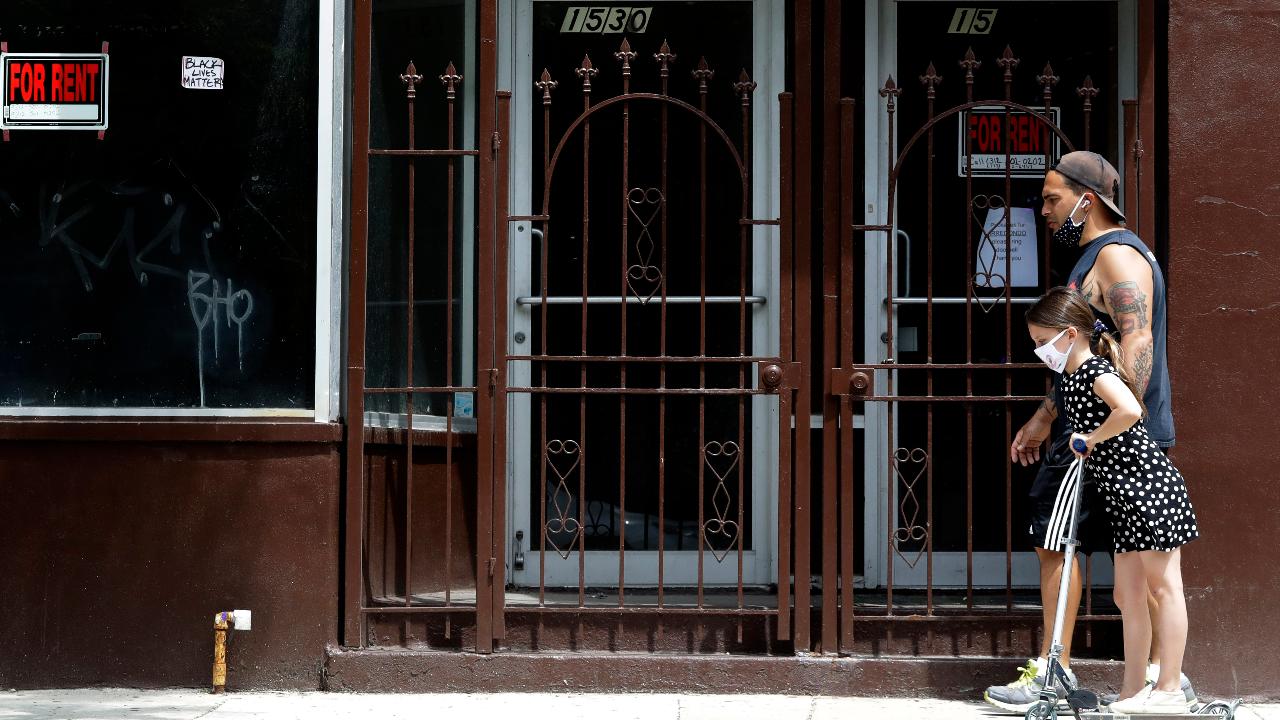Over 1.5M Americans filed for unemployment benefits last week, as pace of layoffs slows
Economists surveyed by Refinitiv expected 1.55M Americans to file for unemployment
More than 1.5 million Americans filed for unemployment benefits last week, but as businesses gradually start to rehire workers, the pace of job losses caused by the coronavirus pandemic and the related lockdown is beginning to markedly slow.
The weekly jobless claims report from the Labor Department, which covers the week ended June 6, pushes the three-month total of job losses since the shutdown began to more than 44 million.
Economists surveyed by Refinitiv forecast 1.55 million.
CONGRESS HAS FUNNELED TRILLIONS TO CORONAVIRUS RELIEF. WHERE IS THAT MONEY GOING?
Although the numbers remain at historically higher levels, the report suggests the worst could be over for the labor market: It marks the 10th straight weekly decline of Americans seeking jobless benefits since claims peaked at the end of March.
Continuing claims, the number of people receiving benefits after an initial week of aid, also dropped last week, falling to 20.9 million, compared to 21.5 million a week ago and 24.9 million at the May 9 peak. Consensus forecasts predicted continuing claims would drop to 20 million.
"The decline in continuing claims affirms what we saw in last Friday's jobs report: the labor market recovery appears to be underway," said Daniel Zhao, senior economist at Glassdoor. "The road ahead promises to still be rocky, however, as transition points in the economy are notoriously difficult to predict and the unsteady declines over the last few weeks do not inspire confidence that the recovery is on solid ground."
WHAT HAPPENS TO YOUR UNEMPLOYMENT BENEFITS IF YOU REFUSE TO GO BACK TO WORK?
The report comes on the heels of a surprisingly good May jobs report. The Labor Department said that employers added 2.5 million jobs last month and the unemployment rate declined to 13.3 percent.
Some economists have suggested that there's a discrepancy between jobless claims and the actual number of unemployed Americans because of a timing mismatch. States were so overwhelmed with applications that there's been a lag between when they apply for the aid and when they actually start to receive it, according to Dave Donabedian, chief investment officer of CIBC Private Wealth Management.
Jobless claims, he said, are “one of the many forecasting tools that you can throw into the trash bin given the unique circumstances.”
States that saw the biggest decline in unemployment claims were Florida, which dropped 97,187 from the previous week. It was followed by texas, which fell by 16,941 and Georgia, down 14,452.
California, however, saw claims jump by 29,426, while Massachusetts saw theirs increase by 17,102.
WHITE HOUSE MULLS MORE VIRUS RELIEF: HERE'S WHAT IT COULD INCLUDE
Federal Reserve officials during their two-day meeting this week forecast a slow and uneven recovery. In their first quarterly forecast this year, the central bankers said they expect unemployment to fall to 9.3 percent by the end of the year. But they suggested the percentage of Americans without a job could remain elevated for years to come, hovering at 5.5 percent in 2022. That's well above the pre-crisis level of 3.5 percent.
"It seems quite likely there will be a significant group that, even after strong job growth, is struggling to find jobs," Chairman Jerome Powell told reporters during a press conference.

